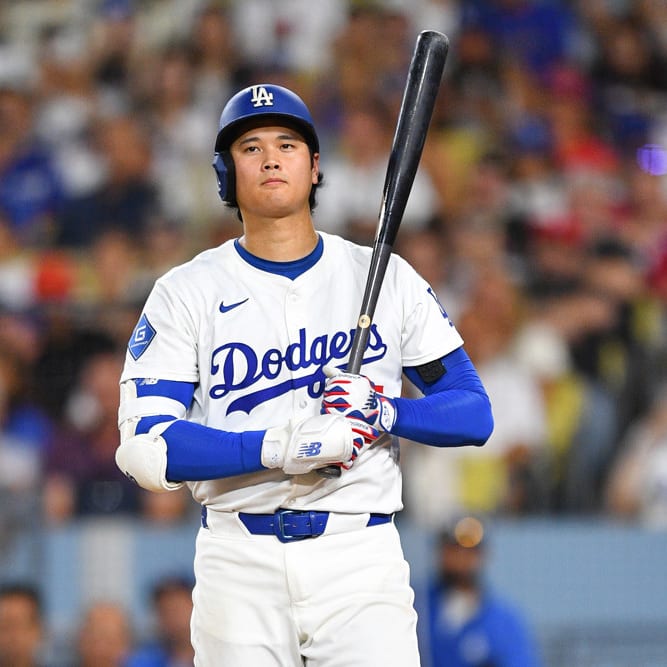One of the unfortunate repercussions of more people using next level stats is more people are misusing next level stats. I realize I can often come off as pedantic; maybe it's the years of scientific training. That said, employing a stat for which one is not completely familiar is lazy. Assuming it means something is even worse.
The current example of this is maximum exit velocity. It's referenced in both the mainstream and fantasy analysis. Yeah, it's cool. Major League batters hit the ball wicked hard. However, it either has no predictive value, or there are better indicators. Yet, it's bandied about as if it reveals something more than the batter happened to hit the snot out of the ball on that particular swing.
Intuitively, what should maximum exit velocity imply? One of the common assumption is a high maximum exit velocity portends a high batting average.
Here are the correlation coefficients, comparing maximum exit velocity and BABIP for every hitter with at least 300 plate appearances from 2017-2019. A coefficient of 1 signals perfect direct dependence, -1 means perfect indirect dependence while 0 says the relationship is completely random.
2019 | 0.10 |
2018 | 0.02 |
2017 | 0.00 |
Sorry friends, it doesn't move the needle. How about power, does maximum average velocity correlate to power, expressed in terms of homers per plate appearance? Let's compare it to overall exit velocity and average exit velocity on fly balls.
Max EV | AEV | FB AEV | |
|---|---|---|---|
2019 | 0.56 | 0.66 | 0.78 |
2018 | 0.55 | 0.62 | 0.74 |
2017 |
One of the unfortunate repercussions of more people using next level stats is more people are misusing next level stats. I realize I can often come off as pedantic; maybe it's the years of scientific training. That said, employing a stat for which one is not completely familiar is lazy. Assuming it means something is even worse.
The current example of this is maximum exit velocity. It's referenced in both the mainstream and fantasy analysis. Yeah, it's cool. Major League batters hit the ball wicked hard. However, it either has no predictive value, or there are better indicators. Yet, it's bandied about as if it reveals something more than the batter happened to hit the snot out of the ball on that particular swing.
Intuitively, what should maximum exit velocity imply? One of the common assumption is a high maximum exit velocity portends a high batting average.
Here are the correlation coefficients, comparing maximum exit velocity and BABIP for every hitter with at least 300 plate appearances from 2017-2019. A coefficient of 1 signals perfect direct dependence, -1 means perfect indirect dependence while 0 says the relationship is completely random.
2019 | 0.10 |
2018 | 0.02 |
2017 | 0.00 |
Sorry friends, it doesn't move the needle. How about power, does maximum average velocity correlate to power, expressed in terms of homers per plate appearance? Let's compare it to overall exit velocity and average exit velocity on fly balls.
Max EV | AEV | FB AEV | |
|---|---|---|---|
2019 | 0.56 | 0.66 | 0.78 |
2018 | 0.55 | 0.62 | 0.74 |
2017 | 0.36 | 0.66 | 0.79 |
Sure, there's a connection between maximum average velocity and power, but fly ball average exit velocity is a much better indicator. Again, an eye-popping maximum exit velocity is best suited for descriptive purposes, with no insinuation it is anything other than a notable event.
This is a good time to reinforce average exit velocity in general isn't all the predictive. Here is its relationship to BABIP:
| Year | BABIP |
|---|---|
2019 | 0.15 |
2018 | 0.10 |
2017 | 0.04 |
There is a small correlation, but nowhere near enough to note a player struggling but sporting a high average exit velocity is likely to regress and improve his BABIP.
Breaking average exit velocity into components isn't any more revealing:
| Year | GB | LD | FB |
|---|---|---|---|
2019 | 0.14 | 0.08 | 0.07 |
2018 | 0.12 | 0.00 | 0.01 |
2017 | 0.10 | -0.01 | -0.01 |
Again, there is a small correlation with average exit velocity on ground balls and BABIP, but nothing to hang your hat on.
In summary, here is the pertinent info with regards to exit velocity:
- Maximum exit velocity has no predictive value
- Average exit velocity on ground balls has extremely limited predictive value for BABIP
- Average exit velocity on fly balls is a strong indicator for home runs
Speaking of home runs, let's update the data through Wednesday's action. As was discussed last week, 450 games are needed for the April HR% to be predictive. One caveat when comparing 2021 to prior seasons is they all have different opening days:
- 2021: April 1
- 2019: March 28 (two game series between OAK and SEA on 20th and 21st)
- 2018: March 29
- 2017: April 2
At the conclusion of Wednesday's slate, exactly 350 games are in the books. We're getting close to the magic number but still about a week away. Even so, the data will be presented for each season through April 15 and for a similar number of games. The variables investigated are:
- HR/PA: Home runs per plate appearance
- Avg FBD: Average fly ball distance
- FB AEV: Fly ball average exit velocity
Through April 15
| Year | Games | HR/PA | Avg FBD | FB AEV |
|---|---|---|---|---|
2021 | 350 | 3.05% | 319.1 | 92.7 |
2019 | 482 | 3.44% | 323.5 | 92.5 |
2018 | 442 | 2.74% | 315.9 | 92.5 |
2017 | 342 | 2.98% | 319.7 | 91.7 |
Through 350 games
Games | HR/PA | Avg FBD | FB AEV | |
|---|---|---|---|---|
2021 | 350 | 3.05% | 319.1 | 92.7 |
2019 | 360 | 3.42% | 322.7 | 92.5 |
2018 | 354 | 2.63% | 316.0 | 92.5 |
2017 | 342 | 2.98% | 319.7 | 91.7 |
To reiterate, based on my research I need one more week before I'm completely comfortable projecting the rest of the season's homers, but it certainly appears like we're tracking close to 2017 (similar to what many are saying).
Of course, long balls are only part of what influences scoring. Here is where things are at with some other factors, using the similar number of games as the endpoint:
| Year | Games | ERA | K% | BB% | BABIP | BAvg | SLG | ISO |
|---|---|---|---|---|---|---|---|---|
2021 | 350 | 4.08 | 24.6 | 9.3 | 0.288 | 0.235 | 0.392 | 0.157 |
2019 | 360 | 4.39 | 23.0 | 9.4 | 0.288 | 0.244 | 0.418 | 0.174 |
2018 | 354 | 3.91 | 22.7 | 9.4 | 0.286 | 0.238 | 0.385 | 0.147 |
2017 | 342 | 3.97 | 21.8 | 8.9 | 0.282 | 0.241 | 0.398 | 0.157 |
BABIP is tied to strikeouts, so this season's higher mark is a result of a smaller denominator. Even so, it's interesting how runs are up a bit over 2017 with similar homers and many more punchouts, though home runs are up slightly.
From a "what does this mean for the rest of the season" perspective, the run environment is close to that predicted using a weighted average from 2017-2020. At least in my case, this is what I did so I don't need to adjust ERA in my rest-of-season engine fueling the site Pitching Rankings that come out over the weekend. However, strikeouts need a closer look. Here is strikeout rate from starters and relievers:
Starters | Relievers | |
|---|---|---|
2021 | 24.3 | 25.0 |
2019 | 23.2 | 22.8 |
2018 | 21.8 | 24.0 |
2017 | 20.9 | 23.2 |
It's interesting to note by the end of the season in 2019, the starter and reliever marks essentially reversed. The key point, at least so far is starters are narrowing the gap on relievers so I may need to accelerate how much my rest-of-season engine captures year-to-date strikeout rates to account for the league-wide increase.
Admittedly, there isn't a ton to take away from the early ball and league data. You can take heart in knowing I'm monitoring it with the application to the weekly rankings in mind, so there is that.







































